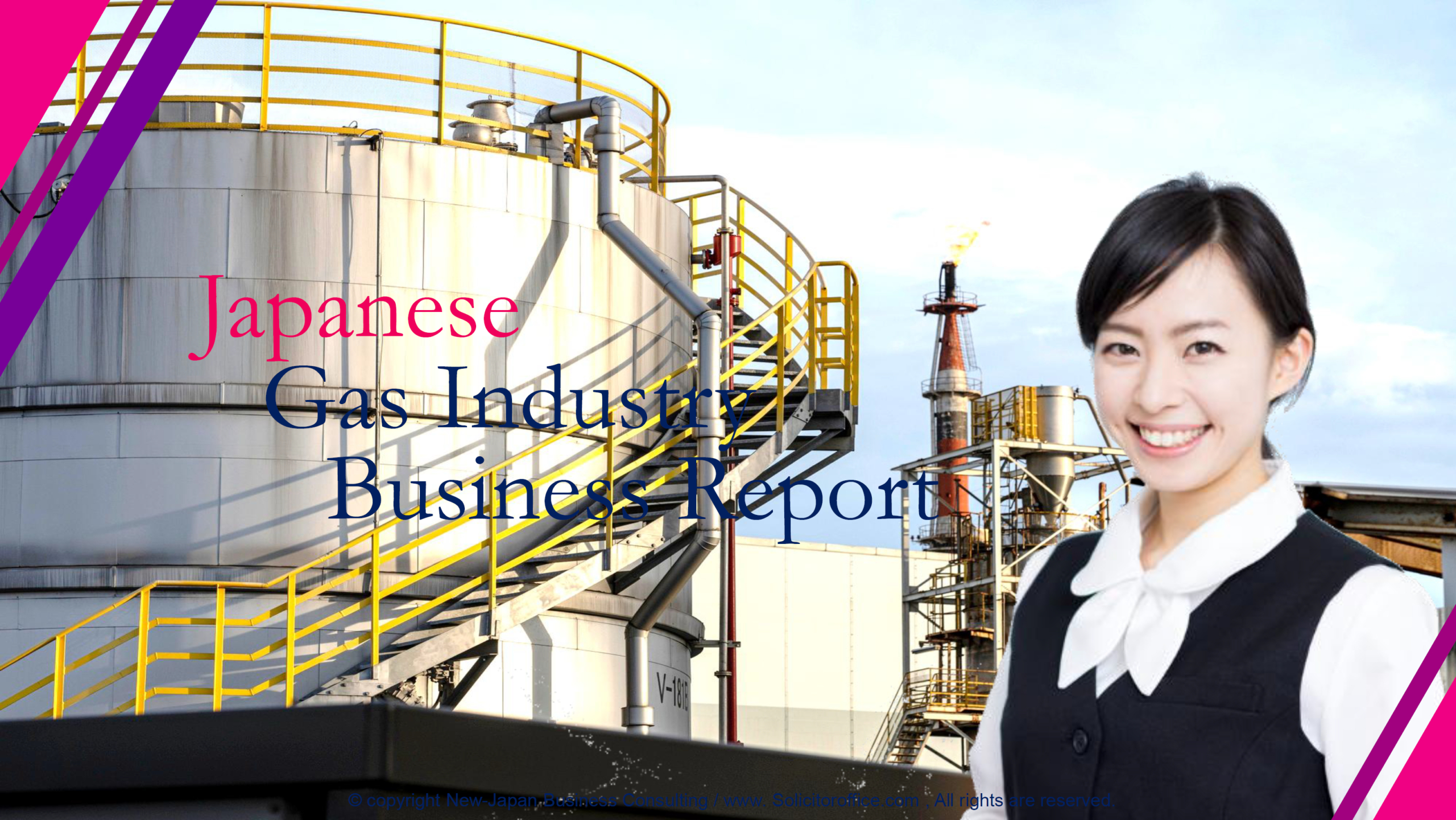説明
Japan’s Gas Industry is at a Crossroads — Be the First to Navigate the Shift
Japanese Gas Industry Report – 2025 Edition
Comprehensive Market Intelligence for Strategic Operators, Investors, Energy Traders, and Policy Advisors
Amid energy transition, geopolitical uncertainty, and increasing decarbonization pressure, Japan’s gas industry is facing a once-in-a-generation transformation. From infrastructure modernization and retail market liberalization to LNG import diversification and hydrogen integration, the landscape is shifting — fast.
Whether you are a corporate strategist, energy trader, institutional investor, infrastructure developer, or policymaker, our Japanese Gas Industry Report – 2025 Edition delivers everything you need to understand, evaluate, and seize opportunities in this evolving sector.
This is more than a market study. It’s a decision-making tool built by experts who understand the complexity, regulation, and capital intensity of Japan’s energy ecosystem — and what’s changing beneath the surface.
Why the Japanese Gas Market Matters — Globally and Locally
Japan is the world’s largest LNG importer and a country with virtually no domestic fossil fuel reserves. It relies heavily on imported gas for power generation, industrial processes, and household use. While LNG has long been seen as a cleaner bridge fuel in Japan’s low-carbon roadmap, the future is now less certain — and full of both risk and opportunity.
Key Characteristics of the Japanese Gas Market:
– 🌏 World’s #1 LNG Importer
Japan remains a global price-setter and contract trendsetter for LNG, with deep ties to suppliers in Australia, Qatar, and the U.S.
– ⚖️ Ongoing Market Liberalization
Deregulation of gas retail markets (post-2017) continues to shake up supply chains, pricing, and competition.
– 💡 Integration with Renewable & Hydrogen Ecosystem
Japan’s 2050 carbon neutrality goal includes major roles for hydrogen and ammonia — with gas firms at the heart of the transition.
– 🏭 Aging Infrastructure Meets Modernization Demand
Upgrades to pipelines, storage, and import terminals are creating new investment and JV opportunities.
– 📉 Volatile Demand & Price Shocks
From Fukushima to COVID to the Ukraine crisis, Japan’s gas strategy is increasingly shaped by global events — and requires active hedging and scenario planning.
Industries covered in this report are represented by the following companies
TOKYO GAS CO., LTD.
OSAKA GAS CO.,LTD.
TOHO GAS CO.,LTD.
HOKKAIDO GAS CO.,LTD.
HIROSHIMA GAS CO.,LTD.
SAIBU GAS HOLDINGS CO.,LTD.
SHIZUOKA GAS CO., LTD.
What’s Inside the Report
Our 2025 Edition delivers over 206 pages of expert analysis, proprietary data, strategic forecasts, and visual insights. It offers not just facts, but context and clarity.
📌 Coverage Includes:
Introduction
Overview of the global gas industry
Importance of business models in the gas sector
Key challenges and opportunities
1. The Historical Development Of The Japanese Gas Industry
1.1. Birth of the city gas business, starting with gas lamps in the meiji era (1872- )
1.2. The expansion of gas infrastructure during the post-war reconstruction period and its promotion as national policy
1.3. Fuel switching and energy security through the introduction of lng (1969)
1.4. History and background of the revision of the gas industry act (from its enactment in 1954 to the present)
2. The Structure Of The Japanese Gas Market And Key Players
2.1. Hierarchical structure of city gas utility companies (division of roles between large and small operators)
2.2. Market structure and characteristics of the lp gas (propane gas) business
2.3. Actual status of gas pipeline network development and penetration by region
2.4. Comparison of the scale of operations of the main gas companies and differences in their management strategies
3. The Profit Structure And Management Model Of The Gas Business
3.1. Traditional profit structure of the town gas business (feedstock cost adjustment system and total cost system)
3.2. Changes in tariff structures and revenue models after liberalisation
3.3. The lng value chain (procurement, transport, storage and supply) and the profitability of each stage
3.4. The impact of seasonal fluctuations and supply and demand adjustment costs on earnings
4. Gas Deregulation And Market Structure Transformation
4.1. Institutional design and implementation process for full retail liberalisation (2017)
4.2. Mechanisms to ensure legal separation and neutrality of the conduit sector
4.3. Business models and competitive strategies of new entrants
4.4. Post-liberalisation market share changes and consumer choice
5. Characteristics Of The Japanese Gas Supply System By Region
5.1. High-density gas supply networks in the tokyo and kinki regions and their economics
5.2. Community-based business models for the gas industry in regional cities
5.3. The role of lp gas in non-conducted areas and its competition with town gas
5.4. Differences in demand characteristics and business strategies in cold and warm regions
6. The Lng Procurement Strategy And The Impact Of International Energy Markets
6.1. The evolution of japan’s lng procurement structure and long-term contracting model
6.2. The relevance of the asian premium issue to international price indices
6.3. Upstream lng concession acquisition strategies and vertical integration models
6.4. Growth of the spot market and new developments in the trading business
7. Business In Combination With Electricity And Heat
7.1. Development of distributed energy businesses with cogeneration at the core
7.2. Electricity and gas retailing bundles and combined utility models
7.3. The economics of district heating and cooling projects and surface energy use
7.4. Comprehensive proposal business as an energy service company (esco)
8. The Transformation That Technological Innovation Is Bringing To The Gas Business
8.1. Upgrading gas use through smart metering and iot technology
8.2. Demand forecasting and optimised operational systems through the use of ai
8.3. Prospects for the commercialisation of hydrogen, biogas and other next-generation gaseous energies
8.4. Business significance of higher efficiency gas appliances and energy-saving innovations
9. Financial And Investment Models In The Gas Industry
9.1. Capital-intensive projects and long-term contract structures
9.2. Public-private partnerships (ppps) for gas infrastructure development
9.3. Role of private equity, institutional investors, and sovereign funds
10. Entry From Other Industries And New Business Models
10.1. Strategies of power companies to enter the gas business and analysis of best practices
10.2. Transformation of petroleum distributors into integrated energy companies
10.3. Creating new services in collaboration with telecommunications and it companies
10.4. Demand development through alliances with the housing and construction industry
11. Future Outlook And Strategic Considerations
11.1. The role of gas in a net-zero economy
11.2. Resilience in the face of geopolitical and market volatility
11.3. Scenarios for the next decade: gas industry disruption and adaptation
12. Transformation Of The Gas Business In The Decarbonisation Era
12.1. Gas industry roadmap towards achieving carbon neutrality
12.2. Practical application of methanation technology and potential for synthetic methane business
12.3. Low-carbon strategies in conjunction with ccus (co2 capture, utilisation and storage)
12.4. Scenarios for the use of gas infrastructure to achieve a hydrogen society
13. Resilience Of The Gas Industry And Its Role In Society
13.1. The economics of investing in disaster preparedness and resilience of supply infrastructure
13.2. Strengthening local resilience through decentralised energy systems
13.3. The role of gas utilities in maintaining energy supply in depopulated areas
13.4. Aspects of addressing energy poverty issues and as a public utility
14. Future Prospects For The Japanese Gas Industry
14.1. Challenges and measures to maintain infrastructure in a society with a declining population
14.2. New customer experiences and service innovation through digitalisation
14.3. Intensifying inter-energy competition and survival strategies for the gas business
14.4. Scenarios for building the next generation gas business ecosystem
15. Conclusion
15.1. Key takeaways and strategic insights
15.2. Business opportunities and risks in the evolving gas market
15.3. Final thoughts on the future of gas industry business models
16. References And Additional Resources
16.1 industry reports and market data sources
16.2 recommended literature on innovation in the gas industry
Who This Report Is For
This report was designed for decision-makers across energy, finance, policy, and infrastructure, including:
– Energy company executives & corporate strategy teams
– Infrastructure developers and logistics operators
– Institutional investors, PE/VC funds, and infrastructure REIT managers
– Government and regulatory agencies
– Gas trading desks, procurement teams, and utilities analysts
– Energy transition consultants and ESG strategists
– Equipment manufacturers and technology providers
If you’re navigating Japan’s energy market, you need this report to stay ahead of regulatory change, pricing dynamics, and long-term structural shifts.
Why This Report Is Different
– Built for Strategic Use: Go beyond data with actionable insights, competitive analysis, and investment-ready summaries.
– Japan-Centric, Globally Aware: Produced by local experts with global consulting experience, offering unique local-market depth.
– Visualized Intelligence: Dozens of charts, graphs, and diagrams for presentations, reports, and board briefings.
– Up-to-Date: Reflects Q1 2025 updates on LNG imports, hydrogen policy, retail competition, and infrastructure projects.
Purchase Your Copy Today
Product: Japanese Gas Industry Report – 2025 Edition
Format: Digital PDF
Language: English
Length: 206+ pages
Price: 4,500 USD
✅ Instant download upon purchase
✅ Secure checkout (Visa / Mastercard / PayPal)
✅ Free update guarantee for 12 months
✅ Corporate licensing available
👉 [Buy Now and Start Reading Instantly]











